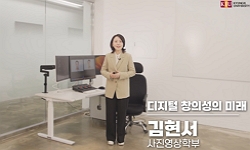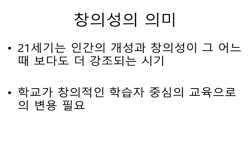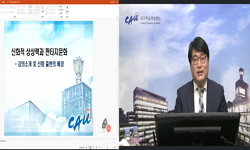본 연구는 아동의 융합적 창의성 향상을 위한‘문학-미술-과학’통합교육 프로그램을 개발, 활용함으로써 21세기 선진국형 인재 양성에 기여하려는 것이다. 본 연구의 1년차에서는 그 이론...
http://chineseinput.net/에서 pinyin(병음)방식으로 중국어를 변환할 수 있습니다.
변환된 중국어를 복사하여 사용하시면 됩니다.
- 中文 을 입력하시려면 zhongwen을 입력하시고 space를누르시면됩니다.
- 北京 을 입력하시려면 beijing을 입력하시고 space를 누르시면 됩니다.
아동의 융합적 창의성 향상을 위한 '문학-미술-과학' 통합교육 프로그램의 개발과 활용
한글로보기https://www.riss.kr/link?id=G3749176
- 저자
-
발행기관
-
-
발행연도
2016년
-
작성언어
Korean
-
주제어
문학-미술-과학 ; Literature ; Art ; Science ; Children ; Integrated Education ; Creativity ; Variety ; 스토리텔링 ; 미술기법 ; 과학원리 ; 창의성 ; 상상력
-
자료형태
한국연구재단(NRF)
-
0
상세조회 -
0
다운로드
부가정보
국문 초록 (Abstract)
본 연구의 1년차에서는 그 이론적인 정당성, 합리성을 확보하려는 것으로서 문학-미술, 문학-과학, 미술-과학의 각 쌍방 영역에 대한 종래의 연구들에게서 표명된 연구내용, 방법 및 범위 등을 총괄적으로 정리하였다.
그 출발점은 표현소재를 스토리텔링화하는 것으로서 그것은 학습자의 흥미를 최대한 유발시킬 수 있음과 동시에 그 가치도 극대화시킬 수 있는 방안이었다. 이어서 스토리텔링화된 문학적 소재를 미술을 통하여 조형화하는 작업으로서 미술에 활용되는 다양한 기법들의 용어, 원리, 표현방법, 선호도 등을 리스트로 작성했다. 마지막으로 미술의 표현기법에 숨겨진 과학적 원리를 찾아내는 일로서 학습자의 흥미감이나 만족도를 극대화시킬 수 있도록 복합적인 미술기법과 그에 따른 복합적인 과학 지식을 체계적으로 도표화하였다. 그 결과물은 아동의 융합적 창의성 향상을 위한‘문학-미술-과학' 통합교육 프로그램의 이론적 연구라는 제목으로『한국과학예술포럼』15호(2014년 3월호)에 게재하였다.
본 연구의 2년차 연구에서는 제 1-3 단계의 표준화된‘문학-미술-과학’통합교육 프로그램 4개를 개발하였다. 그리고 그 프로그램들을 2014년 9월-12월까지 4개월 동안 16차시로 임피면 술산초등학교와 익산 시내 지역아동센터에 소속되어 있는 초등학생들에게 활용했으며, 창작된 결과물을 전시하였다. 끝으로 그 결과는‘문학-미술-과학' 융합교육 프로그램의 개발 및 적용 사례 연구라는 제목의 학술논문으로 정리하여『한국과학예술포럼』19호(2015년 3월호)에 게재하였다.
본 연구의 3년차 연구에서는 연구자가 현재까지 표준화시킨‘문학-미술-과학’통합교육 프로그램을 4개에서 10개로 증가시켰으며, 그것을 일선 초등학교 현장에서 활용하기 위한 준비 작업을 진행하고 있다. 특히 이번 최종 연구에서는 프로그램들에 대한 학습자의 흥미, 호감도 뿐만 아니라 창의성 증진이라는 측면도 고찰하고자 한다. 즉 미국의 심리학자인 토랜스(Ellis Paul Torrance, 1915 -2003)가 개발한 토랜스 창의적 사고력 검사(TTCT : Torrance Tests of Creative Thinking)를 프로그램들의 사전·사후에 실시하여 그 결과를 통계 처리할 예정이다. 본 연구자는 그 일련의 연구 과정들을 최종적으로 학술논문으로 정리하여 전문 학술지에 투고함으로써 본 연구를 종료할 것이다.
본 연구는 아동의 융합적 창의성 향상을 위한‘문학-미술-과학’통합교육 프로그램을 개발, 활용함으로써 21세기 선진국형 인재 양성에 기여하려는 것이다.
본 연구의 1년차에서는 그 이론적인 정당성, 합리성을 확보하려는 것으로서 문학-미술, 문학-과학, 미술-과학의 각 쌍방 영역에 대한 종래의 연구들에게서 표명된 연구내용, 방법 및 범위 등을 총괄적으로 정리하였다.
그 출발점은 표현소재를 스토리텔링화하는 것으로서 그것은 학습자의 흥미를 최대한 유발시킬 수 있음과 동시에 그 가치도 극대화시킬 수 있는 방안이었다. 이어서 스토리텔링화된 문학적 소재를 미술을 통하여 조형화하는 작업으로서 미술에 활용되는 다양한 기법들의 용어, 원리, 표현방법, 선호도 등을 리스트로 작성했다. 마지막으로 미술의 표현기법에 숨겨진 과학적 원리를 찾아내는 일로서 학습자의 흥미감이나 만족도를 극대화시킬 수 있도록 복합적인 미술기법과 그에 따른 복합적인 과학 지식을 체계적으로 도표화하였다. 그 결과물은 아동의 융합적 창의성 향상을 위한‘문학-미술-과학' 통합교육 프로그램의 이론적 연구라는 제목으로『한국과학예술포럼』15호(2014년 3월호)에 게재하였다.
본 연구의 2년차 연구에서는 제 1-3 단계의 표준화된‘문학-미술-과학’통합교육 프로그램 4개를 개발하였다. 그리고 그 프로그램들을 2014년 9월-12월까지 4개월 동안 16차시로 임피면 술산초등학교와 익산 시내 지역아동센터에 소속되어 있는 초등학생들에게 활용했으며, 창작된 결과물을 전시하였다. 끝으로 그 결과는‘문학-미술-과학' 융합교육 프로그램의 개발 및 적용 사례 연구라는 제목의 학술논문으로 정리하여『한국과학예술포럼』19호(2015년 3월호)에 게재하였다.
본 연구의 3년차 연구에서는 연구자가 현재까지 표준화시킨‘문학-미술-과학’통합교육 프로그램을 4개에서 10개로 증가시켰으며, 그것을 일선 초등학교 현장에서 활용하기 위한 준비 작업을 진행하고 있다. 특히 이번 최종 연구에서는 프로그램들에 대한 학습자의 흥미, 호감도 뿐만 아니라 창의성 증진이라는 측면도 고찰하고자 한다. 즉 미국의 심리학자인 토랜스(Ellis Paul Torrance, 1915 -2003)가 개발한 토랜스 창의적 사고력 검사(TTCT : Torrance Tests of Creative Thinking)를 프로그램들의 사전·사후에 실시하여 그 결과를 통계 처리할 예정이다. 본 연구자는 그 일련의 연구 과정들을 최종적으로 학술논문으로 정리하여 전문 학술지에 투고함으로써 본 연구를 종료할 것이다.
다국어 초록 (Multilingual Abstract)
As for the 1st year of this research, it is to secure its theoretical legitimacy, rationality, in which I have arranged in block the research contents, method, scope, etc. displayed by the previous researches on the mutual categories between literature and art, literature and science, art and science.
Its departure was to make rendering subject-matters being storytelling, which was a method for both being able to evoke the learner’s interest to the maximum and at the same time to maximize its value. And the next step was to model the storytelling literary subject-matter through the art, for which I prepared a list of vocabularies of various techniques, principles, expressing methods, preference, etc. used for the art in advance. Finally, it was given to me a task to discover the scientific principles hidden within the expressing techniques of the art, for which I systematically schematized the multiple art techniques and the correlated scientific knowledge in order to maximize the learner’s interest or satisfaction. Its resultant wa
This research is to serve for the cultivation of the advanced country-typed outstanding individuals for the 21st century by developing and applying the ‘Literature-Art-Science’ Integrated Education Programs for Improving Children’s Fused Creativ...
This research is to serve for the cultivation of the advanced country-typed outstanding individuals for the 21st century by developing and applying the ‘Literature-Art-Science’ Integrated Education Programs for Improving Children’s Fused Creativity.
As for the 1st year of this research, it is to secure its theoretical legitimacy, rationality, in which I have arranged in block the research contents, method, scope, etc. displayed by the previous researches on the mutual categories between literature and art, literature and science, art and science.
Its departure was to make rendering subject-matters being storytelling, which was a method for both being able to evoke the learner’s interest to the maximum and at the same time to maximize its value. And the next step was to model the storytelling literary subject-matter through the art, for which I prepared a list of vocabularies of various techniques, principles, expressing methods, preference, etc. used for the art in advance. Finally, it was given to me a task to discover the scientific principles hidden within the expressing techniques of the art, for which I systematically schematized the multiple art techniques and the correlated scientific knowledge in order to maximize the learner’s interest or satisfaction. Its resultant wa











